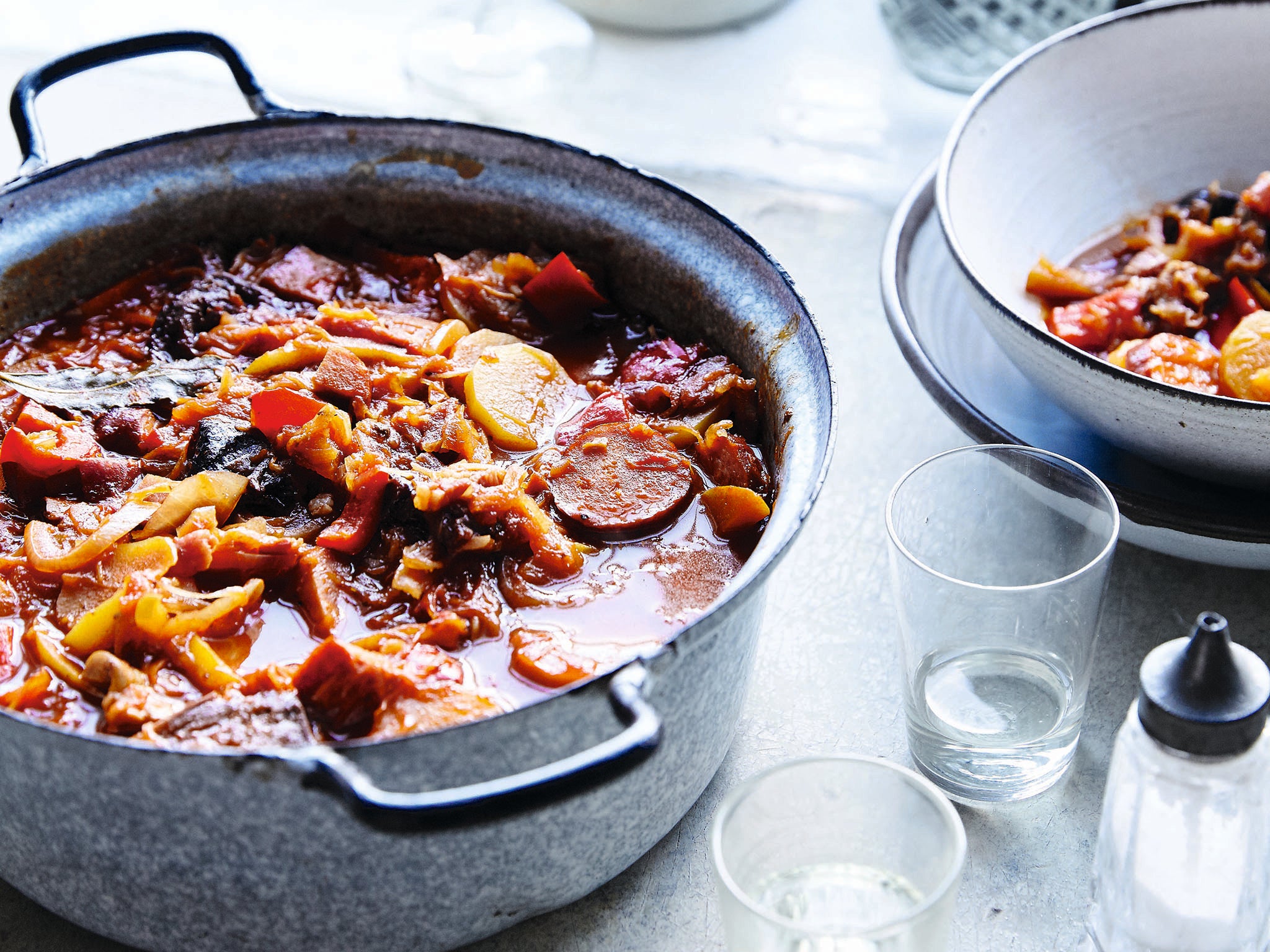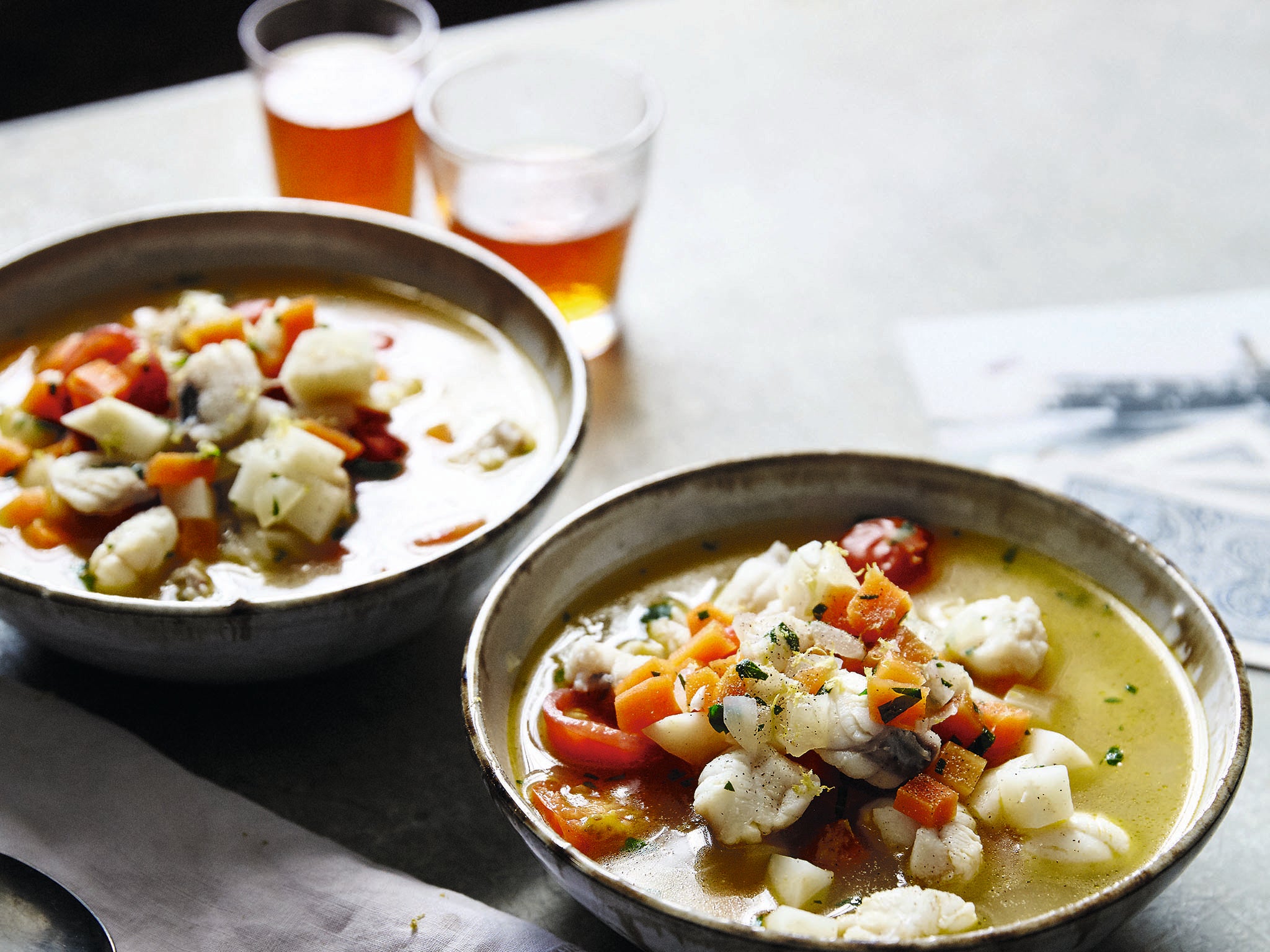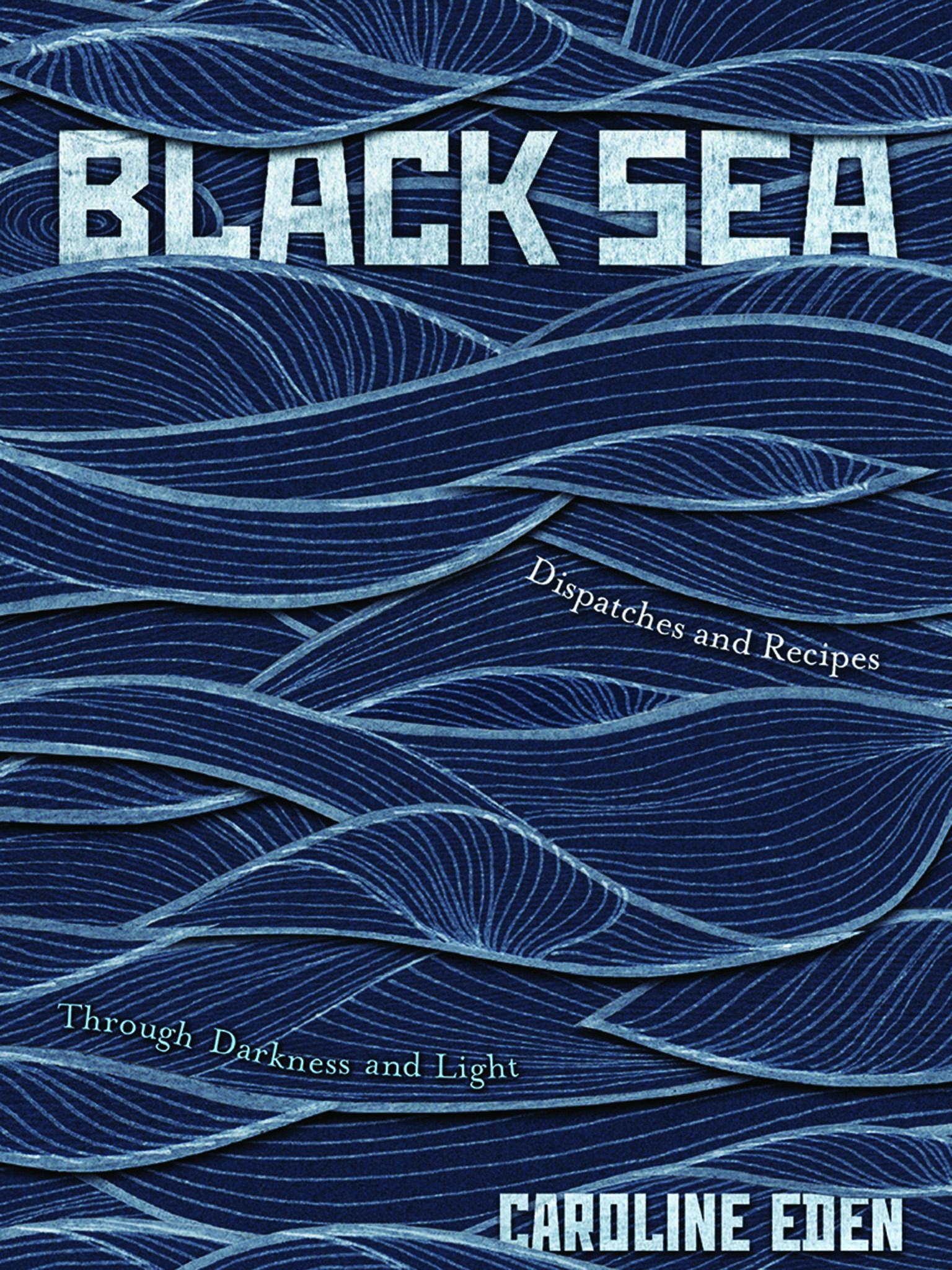Black Sea cookbook: Recipes from zelnik pie to fish soup
This part travelogue, part cookery book charts Caroline Eden's journey from Odessa in Ukraine, through Bessarabia, Romania, Bulgaria and Turkey, giving a unique insight into the culinary cultures that have largely been left off the food tourism map

A bigos for Adam Mickiewicz
Bigos is Poland’s ultimate wintertime stew. Historically, it was made in forest clearings where hunters would drop their game into the pot to add to the pickled fruit and sauerkraut. In Pan Tadeusz, Adam Mickiewicz’s epic poem, he writes of bigos: "In the pots warmed the bigos; mere words cannot tell of its wondrous taste, colour and marvellous smell".
Aromatic bigos is mega-meaty and only its rainbow colours, red peppers, yellow carrots, jet-black prunes, pink bacon, match its complex flavours.
Serves 6
600ml/2½ cups beef or chicken stock
50g/1¾oz dried porcini
a good knob of butter
1 teaspoon vegetable oil
1 onion, sliced into half moons
2 yellow (or orange) carrots, peeled and sliced into coins
1 red pepper, deseeded and diced
1 teaspoon caraway seeds, lightly crushed
1 teaspoon dried marjoram
2 tablespoons sweet paprika
1 teaspoon sharena sol (see below)
2 tablespoons brown sugar
½ white cabbage, shredded
1 apple, peeled and cut into matchsticks (or grated if easier)
250g/8¾oz sauerkraut, drained
1 x 400g/14oz can plum tomatoes
4 slices of smoked bacon, cut into bite-sized pieces
1 fresh bay leaf
100g/3½oz dried prunes, roughly chopped
300g/10½oz smoked kabanos Polish sausage, chopped into bite-sized pieces
salt and freshly ground black pepper
In a medium pan, boil the stock, remove from the heat and add the porcini. Leave to rehydrate for at least 15 minutes.
Heat the butter and oil (which will stop the butter burning) in a large flameproof casserole, add the onion, carrots and pepper and sauté until the onion is translucent. In a bowl, mix together the caraway, marjoram, paprika, sharena sol and brown sugar, then stir in.
Add the shredded cabbage, apple, sauerkraut, plum tomatoes (broken apart a bit before adding), bacon, bay leaf and the stock with porcini. Boil then simmer with the lid on, on the lowest heat possible, for 2 hours. Adjust the seasoning, adding salt and pepper to taste, then add the prunes and sausage, increase the heat slightly and simmer again, with the lid on, for 10 minutes.
Serve with decent beer, cold vodka and Polish rye bread. This is all the more delicious reheated the next day.
Sharena Sol
This is a colourful salt mix and it is a staple in Bulgarian kitchens. As its name suggests, it is salt pounded with spices, typically paprika, and possibly fenugreek and cumin, and it’s sprinkled on bread, fish, chicken and eggs.
20g/¾oz cumin seeds, toasted
1 tablespoon dried fenugreek leaves (also known as kasuri methi)
50g/1¾oz flaky sea salt
1 tablespoon smoked bittersweet paprika (or your preferred paprika)
Bash together the toasted cumin seeds and fenugreek leaves in a pestle and mortar. Once the cumin is lightly crushed, add the salt and paprika to the mixture. Bash a few more times until the sea salt is roughly crushed, but not too fine. Store in an airtight container.

Afternoon zelnik pie
When I first recreated this Bulgarian zelnik at home my husband, James, and I stood at the kitchen counter eating it warm, mid-afternoon. He said, "this is a perfect afternoon pie, it could easily take the place of a 3 o’clock tea-time cake." It was in the afternoon I ate it in Bulgaria too, with the ladies of Malko Tarnovo, hence the name.
Serves 4
5 tablespoons rapeseed oil
5 shallots, thinly sliced into rings
¼ teaspoon freshly grated nutmeg
200g/7oz rainbow chard (or kale), washed, leaves torn to shreds and stalks cut into matchsticks
200g/7oz spinach, washed
leaves of 2 large sprigs of mint
good handful of lovage (optional, if in season)
1 large egg, lightly beaten, plus an extra egg, beaten, to glaze
300g/10½oz white feta-style sheep’s cheese, crumbled
40g/3 tablespoons unsalted butter, melted
270g/9½oz filo pastry
1 tablespoon caraway seeds
salt and freshly ground black pepper
Preheat the oven to 180°C/350°F/gas mark 4. Heat 3 tablespoons of the rapeseed oil in a large saucepan and cook the shallots gently with a pinch of salt until translucent, then add the nutmeg and a generous few grinds of black pepper and stir together, remove to a large mixing bowl and set aside.
In the same pan, add the remaining oil and chard stems, cooking them for 2 minutes. Remove to the mixing bowl then, cooking in batches, gently wilt all the greens (if they’re not dry they will spit), including the mint and lovage, if using. Once cooled, if the greens have released water, squeeze this out.
Transfer to the mixing bowl and leave to cool completely before adding the egg and cheese. Mix and set aside. Grease a round 20–23cm/8–9in round tin with some of the melted butter, and cut the filo sheets into rounds to fit the shape of the tin (10–12 sheets in total). Lay 2 filo rounds in the base of the tin, brushing each with melted butter.
Sprinkle some caraway seeds over, then add a layer of the greens and cheese and repeat these layers, each time brushing the filo with melted butter. End with a top layer of 2 filo rounds, brushed with plenty of butter, a little beaten egg and with a sprinkling of caraway.
Bake for around 35 minutes, until golden. Leave the pie to cool in the tin for 10 minutes before slicing into it. Serve with a pot of afternoon tea.

Banker’s fish soup
One freezing morning in January, I wandered into a tiny fish café in Karaköy, Istanbul. There, I met cousins Muhareen and Muhsin, a chef and waiter, respectively, from the Black Sea city of Ardahan, near the Georgian border. They left their home city over a decade ago to serve the bankers around Bankalar Caddesi – Istanbul’s answer to Wall Street and the financial centre of the Ottoman Empire – what they know best: fish.
Their café is so popular, and the turnover so fast, that no ice is used for the little fish counter in the window. As it was winter, my soup came with scorpion fish, but for this recipe any firm white-fleshed fish will do. Monkfish works well. Many of the banks have now relocated from here but this balik corbasi (fish soup) remains the best fish soup I’ve ever eaten. It is very hearty and is somewhere between a stew and a soup. Served with warm white crusty bread it makes for a decent lunch.
Serves 2
2 tablespoons olive oil
½ medium onion, roughly chopped
1 garlic clove, finely chopped
2 carrots, diced
250g/8¾oz celeriac, peeled and diced
500ml/generous 2 cups fish stock
grated zest of ½ lemon
handful of ripe cherry tomatoes, halved
250g/8¾oz monkfish, chopped into bite-sized pieces
salt
To serve
2 tablespoons chopped flat-leaf parsley
white pepper (optional)
lemon wedges

Heat the oil in a pan and gently fry the onion and garlic with a pinch of salt for a couple of minutes until softened. Add the carrots and celeriac and continue cooking for a further 8 minutes.
Pour in the fish stock and bring to a boil. Turn the heat down and simmer with the lid on for around 20 minutes, or until the vegetables are firm but nearly cooked through. Then add the lemon zest, cherry tomatoes and chunks of fish and cook until the fish is cooked through.
Stir in the chopped parsley, dust with a little white pepper, if you like, and serve with the lemon wedges.
Extracted from 'Black Sea' by Caroline Eden (Quadrille, £25) Photography © Ola O Smit
Join our commenting forum
Join thought-provoking conversations, follow other Independent readers and see their replies
Comments